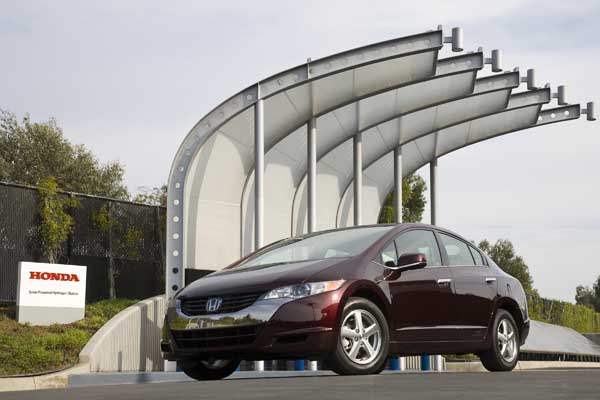Say "carpool lane" or "HOV Access" or "white sticker" or "green sticker," and most California commuters will begin to drool uncontrollably.
The ability to drive in relatively uncrowded High-Occupancy Vehicle (HOV) lanes with just a single person in the vehicle is a privilege that Californians will pay for.
And that's precisely why the state allowed 85,000 owners of three different hybrids to apply for stickers that let them do just that, ending in 2011.
The availability of those 85,000 stickers helped to jump-start sales of the Toyota Prius, Honda Civic Hybrid, and first-generation Honda Insight in the state, reducing vehicle emissions and helping manufacturers sell more to bring down their costs.
Did we mention that the Toyota Prius hybrid is now the most popular car in California?
Green and white stickers
Now the state wants to do the same for vehicles that run some or all of the time on battery power alone, and natural gas too.
It offers California Clean Air Vehicle Decal white stickers--for zero-emission vehicles including battery-electric and hydrogen fuel-cell vehicles, plus natural-gas vehicles--and a limited number of 40,000 green stickers, for plug-in hybrids.
Yesterday, Honda put out a press release touting the fact that it offers four different cars that qualify for one of these stickers--more than any other manufacturer.
That's true, although all four are currently offered only in a few limited markets.
They are the 2014 Honda Accord Plug-In Hybrid, which gets a green sticker, and three models eligible for white stickers: the 2013 Honda Civic Natural Gas, the 2013 Honda Fit EV, and the 2013 Honda FCX Clarity fuel-cell vehicle.
It's too early to tell how the Accord Plug-In Hybrid will sell, since it just went on sale in January, and Honda had sold only 19 through the end of February.
But if it sells at the rate of the Prius Plug-In Hybrid, we might be looking at 10,000 to 12,000 units a year--perhaps less, since it's more expensive.

2012 Honda Civic Natural Gas
Low volumes times 3
What Honda's press release didn't mention was that sales of the other three will be extremely low-volume.
The 2013 Honda Civic Natural Gas is sold in more states than its predecessor, the Civic GX that ran through 2011.
Honda hasn't broken out how many it sold last year, but the GX sold less than 2,000 in an average year, so we expect fewer than 5,000 natural-gas fueled Civics were sold.
Honda has said it will only build 1,100 Fit EV battery-electric conversions of its subcompact Fit over three years, and those won't even be sold, only leased.
The Honda Fit EV is a fun car, but it's also a compliance car, so the Fit EVs will likely be taken off the road after the three-year leases expire.
Finally, there's the Honda FCX Clarity hydrogen fuel-cell car. Last year, Honda delivered 5 of them--and 2 the year before.
Honda says it does not expect its planned fuel-cell vehicles to break even before 2025, so it will continue to lease only low numbers of those cars as well.

Honda FCX Clarity
More vehicles, fewer stickers
In other words, if you want to buy a Honda to travel solo in the carpool lane, it's likely to be an Accord Plug-In Hybrid, or possibly a Civic Natural Gas.
Last year, in comparison, Chevy sold 23,500 Volts nationwide. This year, Tesla is likely to deliver something between 14,000 and 20,000 Model S luxury sedans.
Then there's Ford, which could deliver 15,000 or so of its C-Max Energi and Fusion Energi plug-in hybrids together--and Toyota with another 10,000 or 12,000 Prius Plug-In sales.
So while Honda has the most models that qualify for stickers, there will be far fewer sticker-bearing Hondas on the road.
Isn't math fun?
+++++++++++













